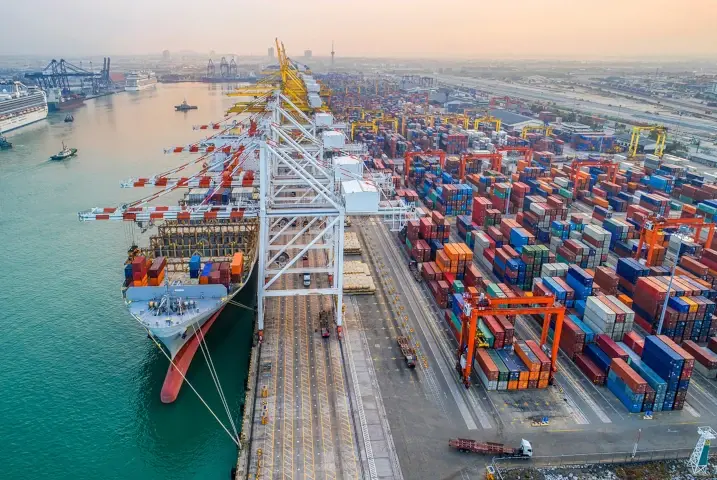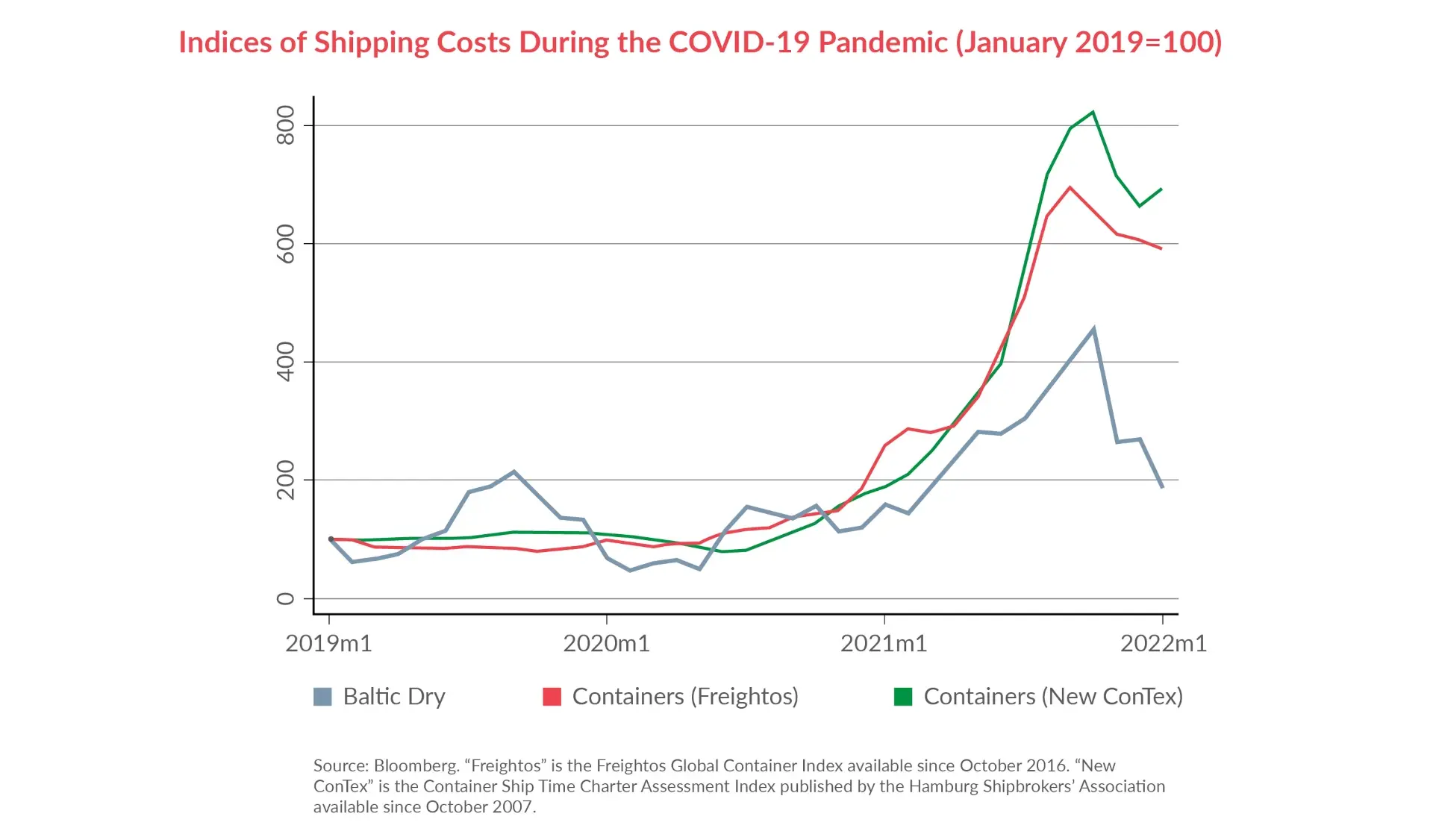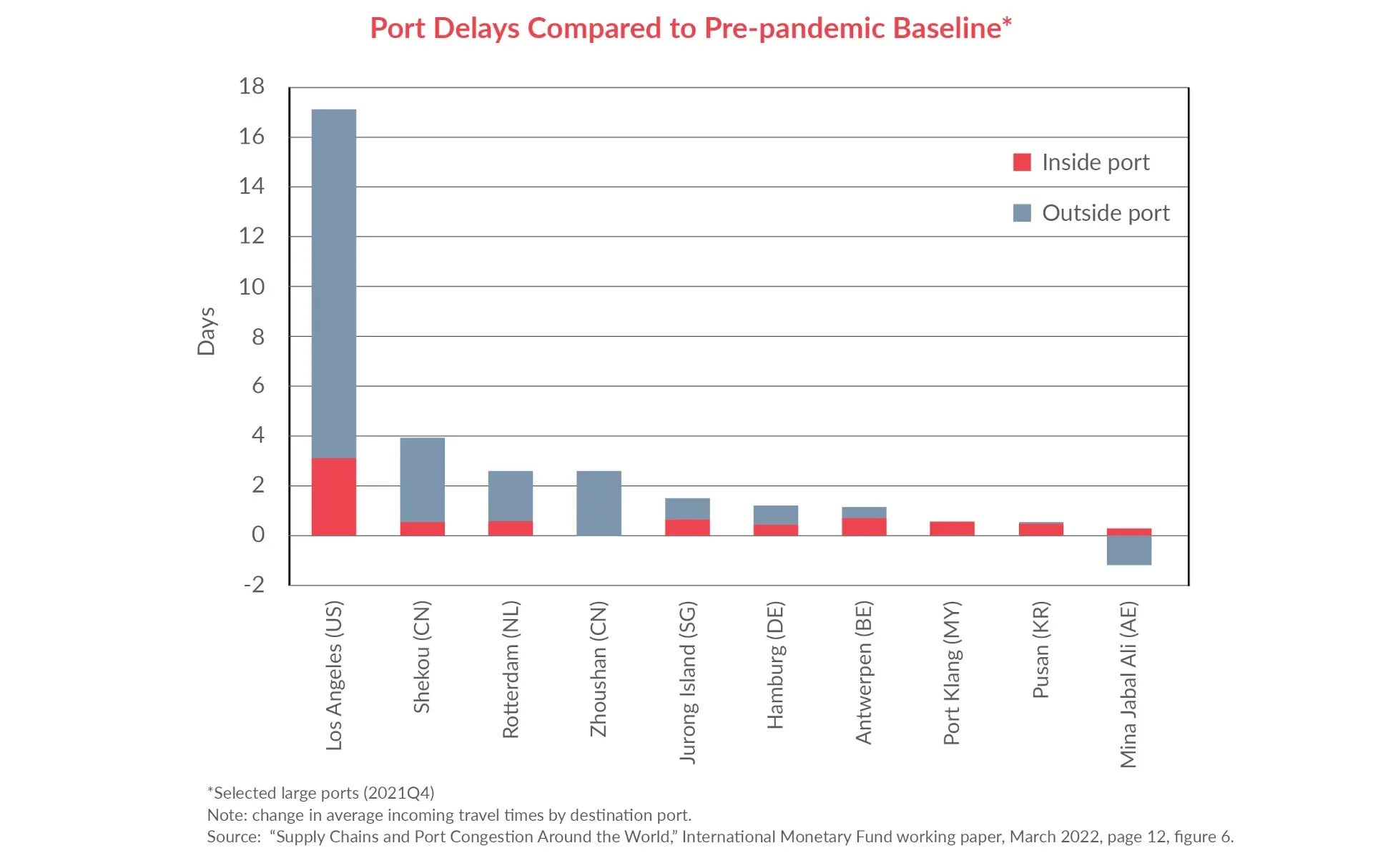
MacroFab Blog
In 2022, the electronics industry was thrown into a whirlwind of challenges, as the COVID-19 pandemic wreaked havoc on the global supply chain, causing supply-and-demand imbalances, and an explosive commodity market. This resulted in shipping rates skyrocketing by twenty percent, shipping times stretching out, and unit costs rising. Recent data indicates the cost of shipping containers by maritime freight increased by 500 percent from pre-pandemic levels while the cost of shipping bulk commodities by sea tripled.
The end result was a five percent drop in profit margins for many businesses, as reported by the IMF in 2022. Despite these hurdles, the electronics industry remained resilient, showing remarkable strength and adaptability in the face of adversity.

The surging shipping rates and costs are a wake-up call for the electronics industry to turn to local sourcing and manufacturing. This bold move promises to revolutionize the industry, slashing shipping costs by fifteen percent, putting an end to interminable shipping times, cutting unit costs, and minimizing supply chain risks.
According to the Department of Commerce, this would also result in a massive seven percent boost in profit margins. The electronics industry must take the reins and embrace local sourcing if it hopes to stay ahead of the curve and secure a dependable supply chain.
Why Did Rates Rise in 2022? Why Does it Still Matter?
Rising shipping rates in 2022 challenged businesses and consumers alike. The shipping industry faced a perfect storm in 2022, caused by multiple factors including

- Unexpected Surge in Demand: The sudden surge in demand for electronics products in 2022 significantly strained the global supply chain, causing shipping rates to rise. Several factors, including the shift to remote work and e-commerce and an increased reliance on technology during the pandemic, fueled this demand.
- Ongoing Pandemic Challenges: The ongoing COVID-19 pandemic also affected the shipping industry, causing persistent supply chain issues. Globally, the pandemic affected staffing and caused widespread factory and port shutdowns, slowing production and transportation.
- A Thriving Commodity Market: The booming commodity market in 2022 also changed the shipping industry, as a substantial part of shipping capacities were taken up by commodities such as oil and food. This left limited shipping abilities for other sectors, including electronics, leading to higher shipping rates.
Checkpoint
Without proactive measures, the challenges of yesterday will only be reincarnated as the obstacles of tomorrow.

The higher freight rates in 2022 negatively affected the electronics industry, increasing transportation costs and decreasing profit margins. A study by the Electronics Industry Association found that the average price of shipping electronics increased by twenty percent, reducing profit margins for many businesses.
While some companies may be eager to brush off the past and move forward now that shipping rates are dropping in 2023, this short-sighted mentality is a recipe for disaster. According to McKinsey Global Institute, companies across the world can now “expect supply chain disruptions lasting a month or longer to occur every 3.7 years.”
This serves as a stark reminder that without proactive measures, the challenges of yesterday will only be reincarnated as the obstacles of tomorrow, repeating ad infinitum. It’s time for companies to break this cycle and tackle the root causes of these disruptions head-on.
Prolonged Global Shipping Times

The shipping industry was plagued by persistent port congestion, a shortage of shipping containers, and a dearth of workers in 2022, negatively impacting the industry. According to the IMF, the average waiting time for vessels skyrocketed by a staggering twenty-four percent, and the global shipping container deficit reached an all-time high with a shortfall of over two million TEUs (Transport Intelligence).
These prolonged shipping times took a toll on the electronics industry, throwing delivery schedules into disarray and adding insult to injury with skyrocketing storage costs. According to a study by Logistics Management, storage costs skyrocketed by twelve percent in the first half of 2022 compared to the previous year.
The combination of longer shipping times, increased storage costs, and production backlogs took a toll on the efficiency of the electronics industry and left a lasting impact on customer satisfaction.
By embracing local sourcing and manufacturing now, electronics companies can slash shipping times, boost efficiency, and regain control over production processes now and into the future. The National Association of Manufacturers found that locally sourced products boast an average shipping time of just three days, compared to 10 days for globally sourced products. By keeping production close to home, companies can reduce the risk of production backlogs and increase customer satisfaction.
The High Cost of Doing Business in Electronics
In 2022, the electronics industry faced a tough reality as costs per unit soared. According to a National Bureau of Economic Research study, the overall production costs increased due to supply chain disruptions, skyrocketing commodity prices, and labor shortages.

And, as a result of production backlogs, many companies were forced to ship smaller quantities to continue meeting customer demand, driving shipping costs even higher. These mounting costs took a toll on the industry, squeezing profit margins and potentially putting market share at risk.
The impact of elevated costs per unit on the electronics industry was significant. The data suggest that reduced profit margins occurred as companies absorbed many of the higher costs. Furthermore, companies saw their profit margins shrink as they absorbed the added costs, as passing those costs on to customers threatened their market share. A survey conducted by PwC revealed a bleak picture, with nearly half of electronics companies reporting a decline in profits in 2022 due to mounting expenses.
Local sourcing and manufacturing can significantly reduce costs per unit. Transportation costs and associated risks are significantly reduced by dropping the need for long-distance shipping. In fact, a report by Deloitte suggests that local sourcing and manufacturing can result in a twenty percent reduction in supply chain costs.
Not only does this strategy lower transportation costs, but it also gives companies more control over their supply chain and shields them from the ups and downs of the global market.
Risks of Global Supply Chains

Black swan events are a constant threat to the global shipping industry and the industries that rely upon it, resulting in sudden cost spikes that can shake the foundation of even the strongest supply chains.
Natural disasters, like hurricanes and earthquakes, cost the global supply chain an estimated $40 billion annually, according to the World Bank. The COVID-19 pandemic, with its sudden and widespread impact, caused shipping costs to soar by eighty percent in the first quarter of 2022, with container, worker, and transportation shortages to blame.
Short-term disruptions, too, such as the Suez Canal blockage in 2021, can disrupt global trade and shipping. This one event resulted in daily losses of $10 billion, according to Lloyd’s List. By reducing supply chain risks, electronics companies can benefit from improved efficiency, cost savings, and customer satisfaction.
A switch to local sourcing and manufacturing can lead to faster delivery times, lower shipping costs, and improved customer loyalty, resulting in higher profits, according to the International Journal of Physical Distribution & Logistics Management.
In conclusion, the electronics industry has faced numerous challenges in recent years, including prolonged shipping times, increased costs per unit, and supply chain disruptions. It is inevitable that these problems will happen again in the future.
However, there are steps companies can take to mitigate these challenges and improve their overall efficiency. Local sourcing and manufacturing can result in faster delivery times, lower shipping costs, and improved customer satisfaction, leading to higher profits for electronics companies.
Companies must take proactive measures to reduce supply chain risks, in order to mitigate the effects of future black swan events that can cause sudden shipping cost increases. By taking these steps, the electronics industry can ensure continued growth and success in the face of ongoing challenges.
Related Topics
Mapping Out a PCBA Supply Chain Strategy in Five Moves
Companies should create unique vendor relationships with numerous international suppliers due to the necessity of having to source components globally.
MacroFab’s Modern Approach to Strategic Sourcing
Many Contract Manufacturers (CMs) and Original Equipment Manufacturers (OEMs) have some sort of procurement team. So what makes MacroFab so different?
Electronics Production: Upgrading Inventory Systems with Modern Tech
Inventory and supply chain management software and processes play a pivotal role in safety, efficiency, & security of electronics manufacturing operations.
Discover how MacroFab can improve your supply chain
Supply Chain SolutionsAbout MacroFab
MacroFab offers comprehensive manufacturing solutions, from your smallest prototyping orders to your largest production needs. Our factory network locations are strategically located across North America, ensuring that we have the flexibility to provide capacity when and where you need it most.
Experience the future of EMS manufacturing with our state-of-the-art technology platform and cutting-edge digital supply chain solutions. At MacroFab, we ensure that your electronics are produced faster, more efficiently, and with fewer logistic problems than ever before.
Take advantage of AI-enabled sourcing opportunities and employ expert teams who are connected through a user-friendly technology platform. Discover how streamlined electronics manufacturing can benefit your business by contacting us today.

